Last Updated on: March 7th, 2025
- Licensed Agent
- - @M-LifeInsurance
A Life Insurance Trust operates as a legal tool that protects life insurance proceeds for beneficiaries through financial security provisions. Life insurance policies become better to manage and generate tax advantages when a trust takes ownership rather than the individual.
A Life Insurance Trust functions fundamentally in estate planning by helping to lower estate taxes while preventing probate delays and allowing policyholders to determine their funds distribution choices. People who establish trusts protect their wealth while creating extended financial support for their families.
Table of Contents
TogglePeople commonly wonder about Life Insurance Trusts’ definition and operating functions. The legal structure of Life Insurance Trusts allows for proper management of death benefit payments. A Life Insurance Trust is an essential financial tool since it enables policyholders to determine benefit disbursement schedules and protects their assets from judicial action.
Proper planning lets the Life Insurance Trust function as a critical tool that protects estates while preserving wealth values. A detailed analysis of how Life Insurance Trusts operate will be provided, along with their advantages and procedures for creating one.
What is a Life Insurance Trust?
Life Insurance Trusts function as legal entities that both control and manage life insurance policies to benefit their beneficiaries. Through this arrangement, the trust takes ownership and management responsibility of insurance policies from direct policyholder control for enhanced financial security and estate planning advantages.
How It Works:
- The grantor who establishes a trust designates the trustee through the creation of the trust.
- Life insurance policies get acquired by trusts either through purchase or through ownership claims.
- The trust receives payments from the grantor for insurance premiums to pay the insurance provider.
- The insurance policy benefits flow into the trust after the grantor dies.
- The trustee implements the distribution instructions defined in the trust agreement.
How It Differs from Direct Ownership:
- Estate Tax Benefits: A correctly designed ILIT ensures life insurance proceeds avoid estate taxation.
- Creditor Protection: A trust owner controls the policy so creditors cannot access the payment.
- Controlled Distribution: The designated conditions for fund disbursement protect the benefits from misappropriation.
Role of the Trustee:
- The trustee maintains trust operations and upholds all legal requirements.
- Pays insurance premiums on time.
- The trust agreement defines how trust money should be distributed.
Through Life Insurance Trusts individuals can protect their assets while offering beneficiaries financial support through organized and tax-advantageous arrangements.
How Life Insurance Trusts Work
A Life Insurance Trust serves as a vehicle to control life insurance payments while it lowers estate taxes and safeguarding assets. Here’s how it works:
Step-by-Step Process of Setting Up and Funding a Life Insurance Trust
- Establish the Trust – When establishing a trust, the grantor chooses both the trustee and the trust itself.
- Choose a Trustee – A trusted individual from the family network or financial fields manages the trust.
- Transfer or Purchase a Policy – A trust obtains either a fresh life insurance policy or transfers an existing one.
- Fund the Trust – Money provided by the grantor enables the trustee to pay insurance premiums.
- Trustee Pays Premiums – Premium payments must be made on time to the trustee so the policy remains active.
- Payout and Distribution – The trust receives insurance proceeds upon the grantor’s death, through which the trust applies its distribution terms.
The Relationship Between Policyholder, Trustee, and Beneficiaries
- The policyholder creates and funds the trust through its role as grantor.
- The trustee maintains trust funds by verifying their proper utilization.
- The trust determines how the beneficiaries will receive their share of the proceeds.
How Premiums Are Managed
The grantor supplies money through the trustee, who handles the payment of premiums. The presence of Crummey Notices in certain trusts grants beneficiaries a short time to pull their contributions, which helps them meet tax exemption requirements.

Benefits of Setting Up a Life Insurance Trust
The Life Insurance Trust offers multiple financial and legal benefits to manage insurance proceeds efficiently and distribute them according to specifications.
Tax Advantages and Estate Tax Reduction
- ILIT status removes life insurance policies from estate taxation, decreasing the total taxes owed.
- Annual gift tax exclusions apply to properly structured trusts, which help avoid unwanted taxation.
Asset Protection and Financial Security for Beneficiaries
- Through the trust mechanism, assets receive protection against lawsuits financial mismanagement, and creditor claims.
- Beneficiaries receive responsible financial support through gradual distributions instead of a single large payment.
- The funds for beneficiaries who are minors or financially inexperienced or have special needs are managed in a controlled manner.
Avoiding Probate and Faster Distribution of Funds
- Trust ownership of insurance policies enables beneficiaries to obtain insurance proceeds without waiting for probate procedures.
- Trusts ensure financial privacy because they differ from the public disclosure of wills.
- Payment is expedited through this method so families can receive their financial assistance in times of critical need.
A Life Insurance Trust helps in providing for your family’s financial security, saving taxes, and retaining and transferring wealth.
Types of Life Insurance Trusts: Irrevocable vs. Revocable
Life Insurance Trust requires a decision between establishing an Irrevocable Life Insurance Trust (ILIT) or a Revocable Life Insurance Trust. Life insurance trusts offer different advantages and drawbacks in their structure.
Key Differences Between ILITs and Revocable Life Insurance Trusts Pros and Cons of Each Type
| Feature | Irrevocable Life Insurance Trust (ILIT) | Revocable Life Insurance Trust |
| Control | Cannot be changed or revoked after creation | Can be modified or revoked anytime |
| Estate Taxes | Excluded from taxable estate | Included in the taxable estate |
| Creditor Protection | Protects assets from creditors | Less protection from creditors |
| Probate | Avoids probate | May still go through probate |
When to Choose an ILIT Over a Revocable Trust
The ILIT structure suits high-net-worth individual needs by helping them reduce estate taxes while protecting their assets and designing structured distributions. People who require flexible systems should select revocable trusts as they provide better adaptability without tax-related benefits.
Life Insurance Trust Beneficiary: Who Can Be Named?
The Life Insurance Trust Beneficiary receives a distribution of trust funds from the insured following their death. When done properly, the distribution of funds will match the grantor’s intentions and defend beneficiaries against potential financial hazards.
Role of a Life Insurance Trust Beneficiary
- Financial aid, according to trust provision,s goes to the beneficiary.
- The funds are distributed through lump sums or structured payments to promote responsible use of resources.
- The trustee maintains the fund while distributing resources to fulfill their intended use.
Choosing Primary and Contingent Beneficiaries
- Primary Beneficiary – The individual or entity who receives payment distributions first (such as spouse, children or charity) holds this right.
- Contingent Beneficiary – A secondary recipient who inherits when the principal inheritor dies or cannot receive (such as grandchildren or trusts set up for minor children).
Restrictions and Conditions for Receiving Payouts
- Through restrictions set by the trust beneficiaries must wait until reaching financial maturity to receive distributions.
- The law contains specific protections for people who have disabilities or those who may not handle money responsibly.
- The funds receive designated purposes to cover education needs, medical bills, or long-term care.
The selection of beneficiaries ensures that life insurance funds are utilized properly, creating long-lasting financial stability.
How Much Does Life Isurance Cost?
How to Set Up a Life Insurance Trust
People must plan their Life Insurance Trust (ILIT) setup with precision to achieve estate planning objectives while following legal standards. The following information provides a complete guide to building an ILIT.
Step-by-Step Guide to Creating an ILIT
- Choose a Trustee – Choose someone trustworthy to oversee the management of the trust fund.
- Draft the Trust Agreement – An estate attorney should help you draft a legal document that specifies the terms and conditions.
- Fund the Trust – Life insurance coverage can be obtained through the trust by starting fresh or moving existing policies under its management.
- Comply with Tax Laws – Life insurance coverage can be obtained through the trust either by starting fresh or moving existing policies under its management.
- Manage Premium Payments – The person who funds the trust provides financial resources to the trustee who handles premium payments promptly.
- Ensure Proper Record-Keeping – All contributions and financial transactions need precise documentation to fulfill tax requirements.
Legal Requirements and Documentation Needed
- Trust Agreement establishes the essential conditions and service obligations for trustees.
- Life Insurance Policy assigned to the trust.
- IRS Documentation to ensure compliance with estate and gift tax laws.
Role of an Estate Attorney
The proper structure of ILIT requires an estate attorney who executes the trust while minimizing taxes and legal issues. Working with a professional ensures the protection of assets while providing the necessary expertise to manage the trust accurately.

Potential Drawbacks and Considerations
Establishing a Life Insurance Trust will bring numerous benefits yet potential difficulties must be evaluated before implementation.
Loss of Control in an Irrevocable Life Insurance Trust
- Once an Irrevocable Life Insurance Trust (ILIT) A grantor loses the ability to change or terminate the grant after its creation.
- A trustee controls the insurance policy and fund distribution which restricts the grantor from modifying terms when circumstances change.
- The law must authorize all modifications, which rarely fulfill legal requirements.
Cost of Administration and Legal Fees
- The law must authorize all modifications, which rarely fulfill legal requirements.
- Trustees can invoice fees for trust administration work, particularly when a professional or corporate trustee carries out the role.
- The overall business expense increases from ongoing costs, including tax filing, record maintenance, and policy premium payments.
Tax Implications for Different Types of Trusts
- The tax-free nature of ILITs enables policy removal from estate taxation, yet gifts exceeding IRS thresholds to the trust could trigger federal gift taxes.
- Revocable Life Insurance Trusts receive regular taxation and lack estate tax benefits for inheritance purposes.
- Trust distribution income can trigger income tax responsibilities depending on how the trust manages and delivers funds to beneficiaries.
Knowing these drawbacks enables people to construct Life Insurance Trusts that align with their estate planning objectives.
FAQs About Life Insurance Trusts
Can You Change Beneficiaries in an ILIT?
No, the grantor cannot change beneficiaries once an Irrevocable Life Insurance Trust (ILIT) is created. The trust structure remains outside the taxable estate yet it becomes permanently unchangeable after its establishment.
How Does a Life Insurance Trust Affect Medicaid Eligibility?
The assets placed into an ILIT do not contribute to Medicaid eligibility requirements. People interested in Medicaid benefits and wanting to protect their inheritance can benefit from using an ILIT.
Can a Trust Own Multiple Life Insurance Policies?
A Life Insurance Trust maintains its flexibility through its ability to contain multiple life insurance policies for estate planning purposes. High-net-worth individuals benefit from the Life Insurance Trust because they can consolidate multiple policies under one trust to achieve tax efficiency and asset protection purposes.
Conclusion
The Life Insurance Trust is a vital estate planning tool that enables tax reduction through asset protection and insured money allocation under controlled circumstances. Due to their advantages and disadvantages and legal requirements, you must understand everything about Irrevocable and Revocable Life Insurance Trusts.
When setting up an estate plan, you should seek advice from a legal agent who will help draft a good plan that best suits you. It’s always preferable to get professional advice to steer clear of the taxation rules hindering trust establishment and other procedures of choosing beneficiaries and embracing the responsibilities of a trustee to enable you to accumulate the most from the trust.

Joyce Espinoza, Expert Life Insurance Agent
Joyce Espinoza is a trusted life insurance agent at mLifeInsurance.com. She’s been in the insurance industry for over ten years, helping people, especially those with special health conditions to find the right coverage. At MLife Insurance, Joyce writes easy-to-understand articles that help readers make smart choices about life insurance. Previously, she worked directly with clients at Mlife Insurance, advising nearly 3,000 of them on life insurance options.


